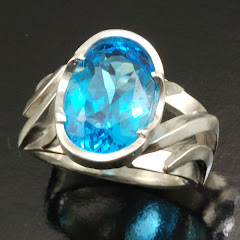---------- Forwarded message ----------
From: Ryan Brower <ryanvdj@gmail.com>
Date: Mon, Sep 27, 2010 at 11:48 AM
Subject:
To: post@posterous.com
From: Ryan Brower <ryanvdj@gmail.com>
Date: Mon, Sep 27, 2010 at 11:48 AM
Subject:
To: post@posterous.com
Asheville, NC salt glazed mountain pottery.
We have a lot of salt glazed pottery in Asheville. It makes a very interesting type of stoneware with a rustic quality.
From Wiki:
Definition:
Pottery referred to as salt glazed or salted is created by adding common salt, sodium chloride, into the chamber of a hot kiln. Sodium oxide acts as a flux and reacts with the silica and clay in the clay body. A typical salt glaze piece has a glassine finish, usually with a glossy and slightly orange-peel texture, enhancing the natural colour of the body beneath it.
Salt fumes have a dramatic effect on clay under heat. When kiln temperatures reach the melting point of common salt, approximately 900 °C (1660 degrees °F), granulated or rock salt can be introduced into a kiln through peepholes or other openings. This results in a surface blush of colour formed on the ware body.
Salt can also be used as a decorative element on selected individual pots. Bisque ware can be soaked in a brine solution to create salted patterns. Rope and other textiles can also be soaked in brine and wrapped around bisque ware. Salt can also be added, in solution, to colored clay slips and can be sprinkled onto bisque ware in pottery containers called saggars.
History:
The unique characteristics of salt glazing were discovered in the Rhineland of Germany, probably in the 14th century.
Salt ware was also popular during the colonial period in North America and in the early years of the United States. Initially, significant amounts of salt ware was imported from England. Americans began producing salt-glazed stoneware circa 1720 in Philadelphia, Pennsylvania, and Yorktown, Virginia, and American Stoneware became the predominant houseware of nineteenth century America. Contemporary potters in both North and South Carolina are well known for ongoing salt fired production.
Present Day:
Modern studio potters using traditional salt processes are working in many areas of the world. The unique salt glaze finish captures spontaneous changes in atmosphere and color. The method is considered a tool for ongoing experimentation and creativity.
Here is a video of some work by David Cuzick with soda glaze, a similar process:
You can see a large variety of Asheville potters at the Southern Highland Craft Fair coming October 21-24th.






No comments:
Post a Comment